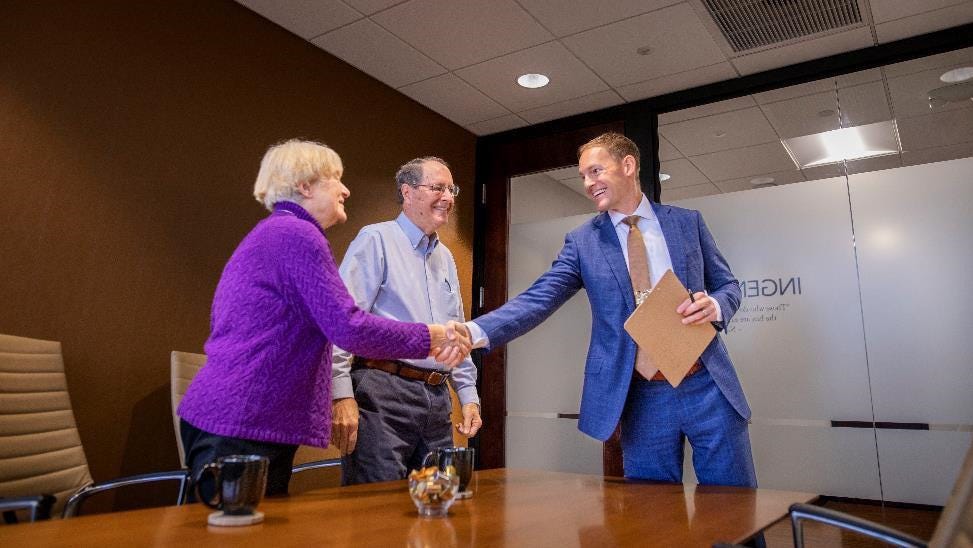Digital financial advice that’s based on a mathematical formula has become increasingly popular over the last decade. Fans of automated investing see it as an efficient and inexpensive way to build and maintain an investment portfolio. But while an algorithm can allocate assets and select investments based on a person’s input, it is incapable of understanding and addressing what I believe are the most critical components of successful investing — human emotion and behavior. Feelings and behaviors are typically the biggest impediments to sticking to a long-term plan and achieving financial goals. A human advisor whose clients ultimately cross the finish line is part psychologist and part financial expert.
Most of my clients are mature individuals who are approaching retirement age or are already retired. They know how much is at stake every time they make an important financial decision, so there’s a lot of anxiety associated with making the right choices. Without the right guidance and advice, they could be tempted to make impulsive or risky moves due to the fear of losing money or the urgency of playing catch-up. Talking them down requires using some psychology, and no algorithm that I’m aware of is capable of that.
Reliance on a mathematical formula is also unlikely to prevent or break the deadlock a couple can encounter when they look at money differently. I deal with the impasse quite often when one partner is a teacher and the other an engineer. The engineer is generally more risk tolerant and feels if they do enough research they’ll come up with the right answer. The teacher favors guarantees, shuns volatility, and feels comfortable making the same decision as their peers. I doubt there’s anything a computer program can spit out that will do what I do—take both attitudes into account, find common ground, and create a path forward.
In my opinion automated investing can be a fine solution for novice investors, especially young people in their late 20s and early 30s. Robo-advisors serve this age group well, optimizing asset allocation for as little as 25 basis points with a low starting balance. It’s a good fit because a young person’s financial needs tend to be straightforward, confined to investing and focused on one or two goals. By the time they have multiple financial needs that involve tax and estate planning and income protection, they need personalized advice from a human advisor.
Robo-advisors have begun to offer a hybrid model, where digital investors pay an additional fee to get occasional or dedicated assistance from a human advisor. Signing up for this service can easily push up the 25-basis-point fee to 75, which is close to the 1% fee charged by most financial advisors, including some of the very best in the country.
It’s been said that automated investing platforms can manage money, but they can’t manage emotions. It’s not only advisors who are of that opinion. In a large 2022 investor study conducted by Vanguard, most respondents said they preferred human advisors to robos for planning services and emotional topics. To be more specific, they said human advisors excelled at helping them achieve financial success and emotional peace of mind. Investment algorithms have their place, but their added value is very different from that of a human advisor. While I expect digital investing will continue to grow, I certainly don’t expect to be out of a job any time soon.
Read the full article here




